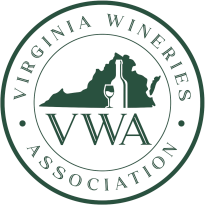WINCHESTER — The threat to trees and crops posed by the spotted lanternfly continues to grow in the region, officials with the Virginia Department of Agriculture and Consumer Services (VDACS) told the Frederick County Board of Supervisors in a virtual presentation last week.
The invasive pest made its way to the United States from Asia in 2014 on a delivery of ornamental landscaping stone in Berks County, Pennsylvania. Four years later, it was found in Winchester. The spotted lanternfly can now be found in Frederick, Clarke, Warren, Shenandoah and Augusta counties.
Though the colorful insect is pleasing to the eye — it has a yellow and black body with spotted red, white and black wings — it can destroy or damage crops such as apples, grapes, peaches, cherries and hops. It also has been responsible for the decline of black walnut trees in the region, as well as the invasive tree of heaven, a state official has said.
David Gianino with the VDACS told the board that the spotted lanternfly had primarily been found in urban, industrial and business areas, but it is now spreading to rural areas. He said the region can expect to see a noticeable impact on agriculture.
Apples and grapes, which are grown throughout the area, are particularly at risk, said Kyle Rhoads of the VDACS.
“This insect, this invasive pest, is a large nuisance for homeowners and landowners,” Rhoades said. “Their properties can be overwhelmed pretty quickly. It’s a highly reproductive insect.”
Efforts to eradicate the spotted lanternfly will require cooperation among agencies such as the USDA, Virginia Cooperative Extension, local governments and concerned citizens.
Rhoades said VDACS follows reports of spotted lanternfly sightings, assesses properties and, with permission, takes action to trap or eradicate the insect with pesticides and herbicides.
Last year, the state enacted a spotted lanternfly quarantine in Frederick County, which requires businesses moving products in and out of the county to have a permit. An online training course to help identify spotted lanternflies must be completed before applying for a permit. Once training is completed and a permit is received, employees must learn how to inspect goods for spotted lanternflies. The goal is to identify pathways where there could be human-assisted movement of the insect and stop it.
Rhoades said localities can help stop by the spread of the spotted lanternfly by following best management practices, such as routinely checking for the insect and their egg sacs, and reporting sightings to their local Cooperative Extension office. The local number is 540-665-5699.
For more information about the spotted lanternfly, such as how to identify it or how a business can obtain a permit in a quarantined area, visit www.vdacs.virginia.gov/plant-industry-services.shtml.
— Contact Josh Janney at jjanney@winchesterstar.com
Article Source: https://www.winchesterstar.com/winchester_star/regions-agriculture-can-expect-noticeable-impact-from-spotted-lanternfly-state-officials-say/article_51a41302-7e10-5b4c-964e-54f3ce650073.html
